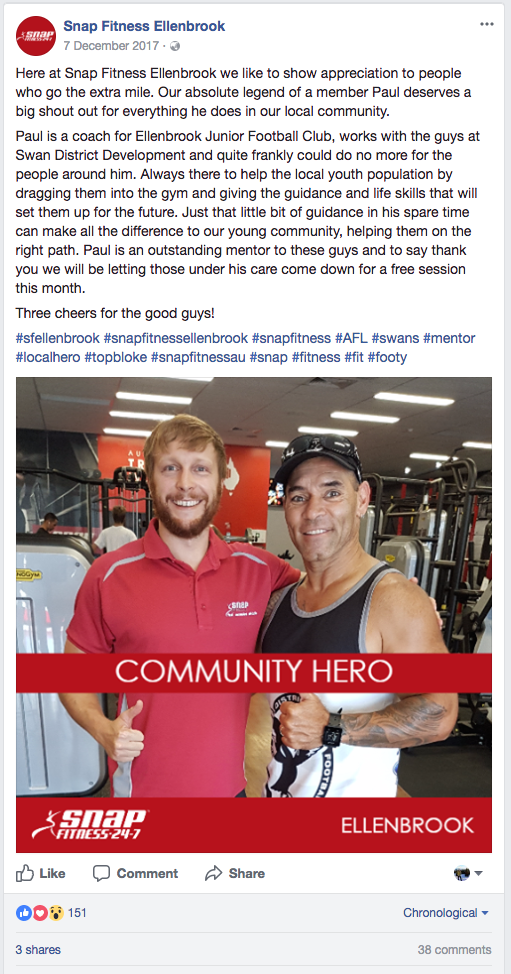At this point, there is a mountain of facts and figures about the perfect post length on social media.
However they all seem to talk about averages. I’m not disputing the data. But the ‘black and white’ statement that shorter is better is an oversimplification. A misrepresentation. And with the way it’s sometimes presented, I’d even argue it’s a straight up lie.
The reason I’m surprised is that we routinely see extremely high engagement on long posts from Digital Stack users. To blindly follow the ‘shorter is better’ mantra is a mistake.
For some prime examples from Digital Stack users and reasons why this is so, read on…
Averages don’t tell the story
The big problem with definitive statements about ideal post length is they are based on statistical averages across hundreds of thousands of posts. Check out some of these black and white proclamations:
“Maximum engagement (for Facebook posts) happens at 40 characters”- Buffer
“Facebook posts with 80 characters or fewer received 66% higher engagement.” – FastCompany
It’s statements like these that get my eyebrows twitching because I regularly see lengthy posts like this gem getting sky-high engagement:

The problem with simplistic statements about ideal post length is they ignore the context and turn a blind eye to a host of factors that may impact engagement. These may include:
- What was the nature of the post? One post is a picture of someone’s burger they’re eating for lunch with an unimaginative 20 word caption. Another is a competition, asking followers with a 9 word caption to comment with the word ‘WIN’ to go into the draw to win a new car. What is going to perform better for engagement and reach? And what does this then tell us about ideal post length? Nothing.
- What were the preceding posts about? Is this more of the same or a remarkably different post?
- What was their post (caption) length, and what was the format – text only, video, photo, GIF? If they are different we’re no longer making an apples vs apples comparison. How could you ignore that from your analysis? Apparently it’s quite easy.
- Who was studied in the statistical analysis? For example, Buffer states their 40-character advice comes from “a Buddy Media study of the top 100 retailers Facebook pages during a six-month period in 2011”. Unless you’re a massive US-based retailer operating in the past, that’s a serious red flag.
Use long posts as your joker
Now I’m not suggesting you ignore the findings of these analyses completely. What I am saying is more substantial, wordy posts should form part of your broader social media plan.
Despite the simplistic headlines with definite claims around shorter posts working better, there is a ton of evidence from Digital Stack users that the occasional lengthy post can shoot the lights out. Just like this:

Sure, if you’re going to drop an essay with each post, chances are quality will suffer and you’ll lose your audience. But if you use the occasional lengthy post as your joker in the pack, you stand a very strong chance of producing a social hit.
To blindly follow the ‘shorter is better’ mantra is a mistake.
Why long posts can and do work
Looking at real-world examples of high performing posts we can identify the common elements that make them winners.
- The length enables the poster a chance to provide hearty, comprehensive information to readers, creating more connection and developing relationships with their audience. It’s hard to bond with three words and an emoji.
- Visually, a slab of writing in a social media stream can attract attention. Social media audiences are now trained to see a few lines of text broken up with large images or videos. By filling more than half a mobile screen with text you’re sure to get noticed and elicit a response. It might be a mild ‘‘what’s going on here?’ or perhaps a more excited ‘OMG they’ve blown a fuse and are going on a rant’. Either way, you’ll have piqued curiosity and they’ll give the first few sentences of your post a read to see if its worth continuing on.
- Longer posts can elicit more responses as there are more points to respond to. So long as the tone of the post is right, it can feel more like a conversation.
Final thought
Don’t just take headline results from others’ social media analyses and apply it to 100% of your posts from this point forward. A short post is like a snack, a long post is like a feast. We sit down to a feast only occasionally, but we also love to snack. There is no right or wrong.

